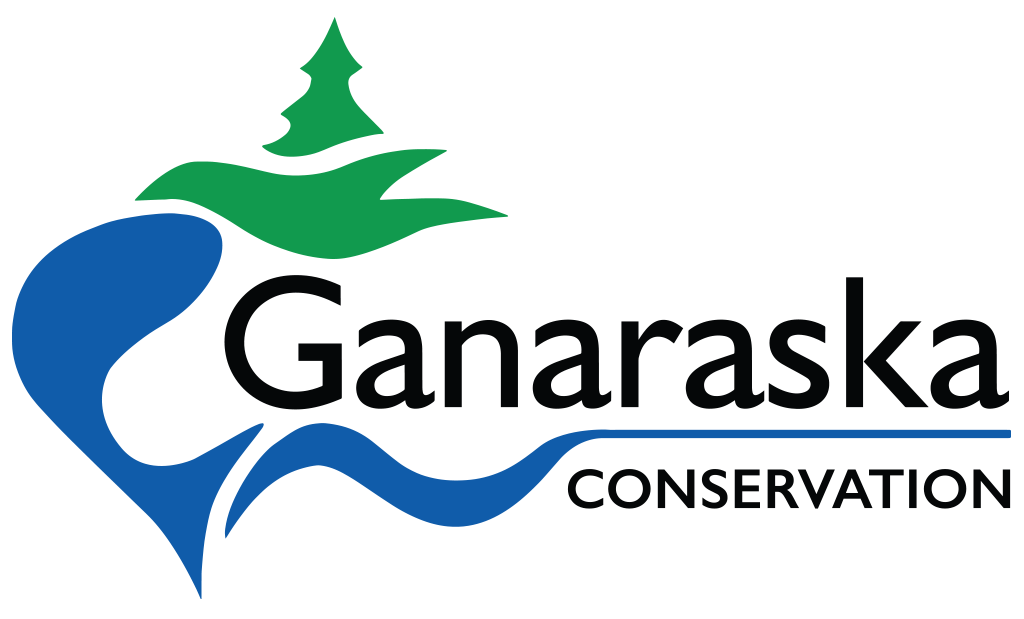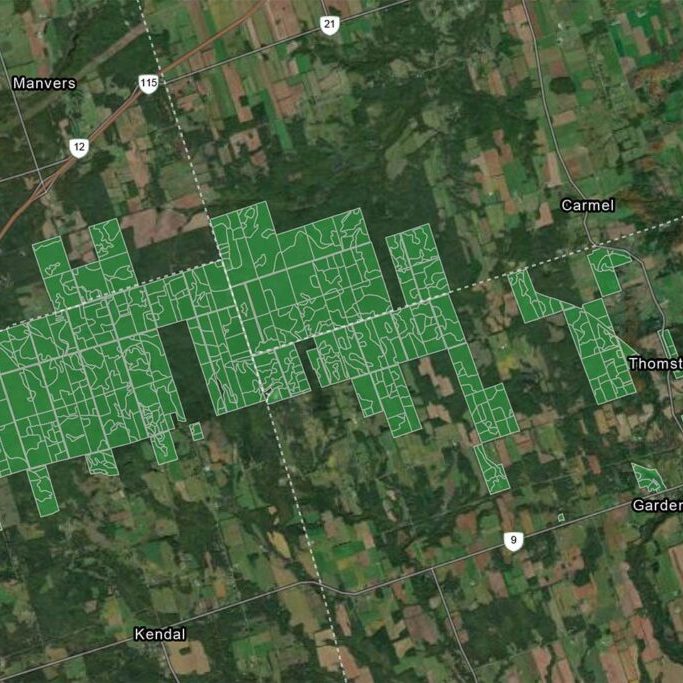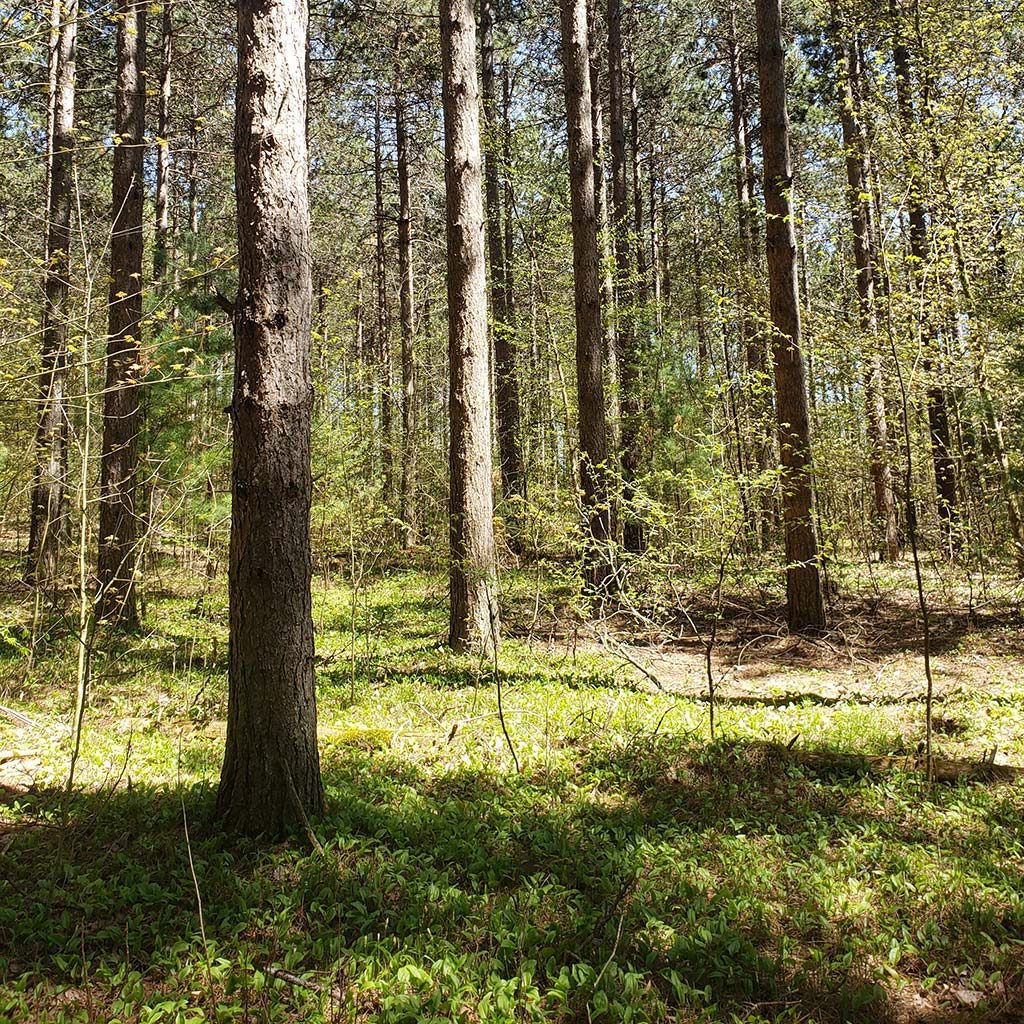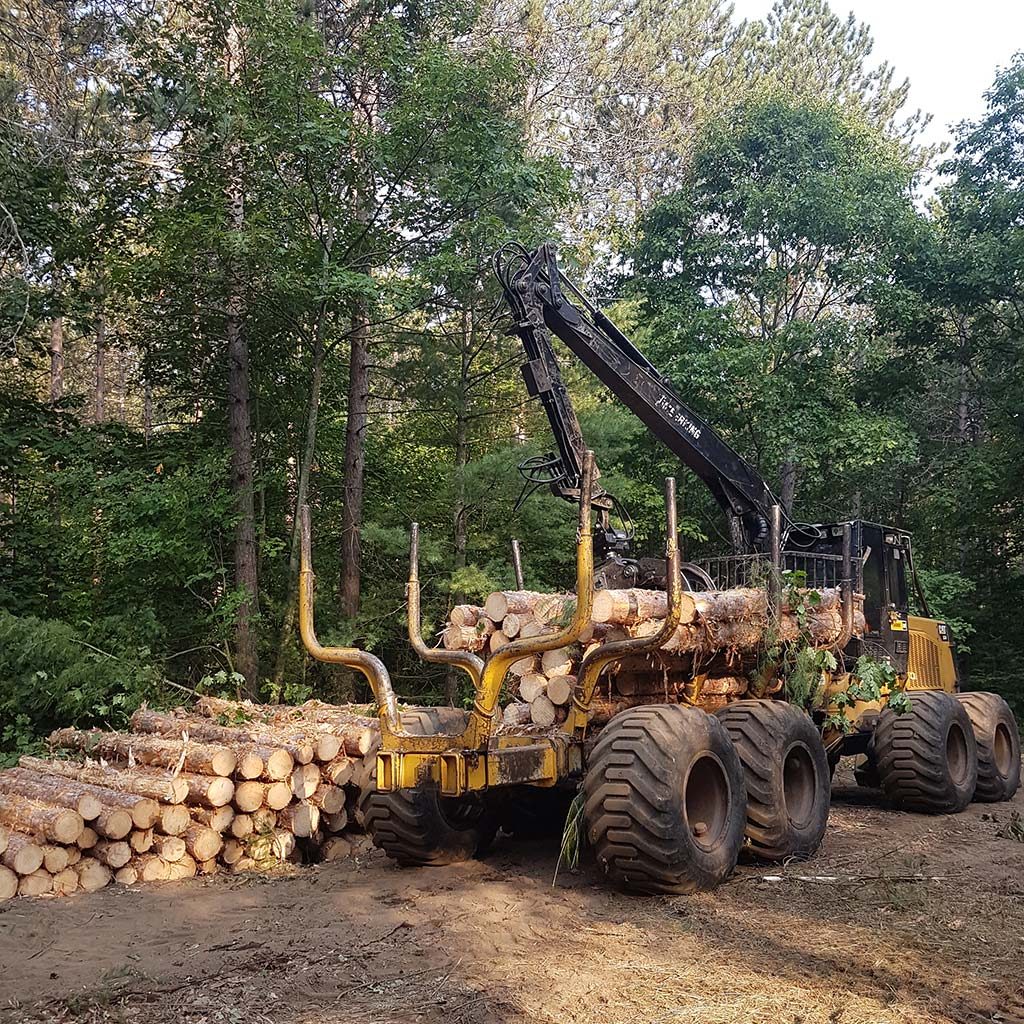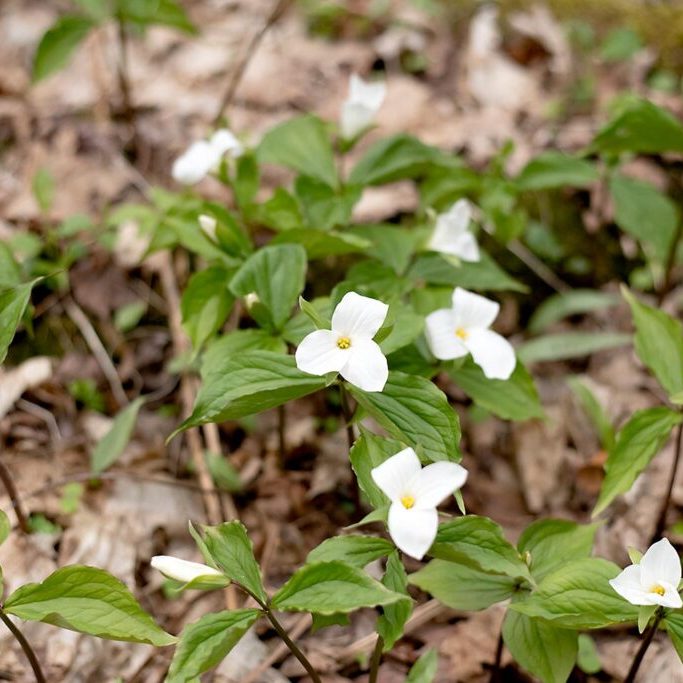
Managing a forest properly requires broad management goals and a long-term vision.
Forests are complex, dynamic environments that operate on timescales far beyond the lifespan of human beings.
In Ontario, long-term management is done through a twenty-year forest management plan prepared by a Registered Professional Forester. Plans utilize Good Forestry Practices and sound silvicultural principles to ensure sustainability and a balance of social, economic and environmental values. The Plans are updated every ten years to ensure that management strategies are sustainable, effective and reflective of the most current data forest conditions and information.
The GRCA manages the Ganaraska Forest and its forested properties under the direction of the Ganaraska Forest Management Plan, 2018–2038. Although specific objectives vary across the GRCA’s properties, the overarching focal points for management are ecological restoration, conservation and recreation.
Steps In A Timber Harvest
Step 1
Current forest stand conditions are assessed using a forest inventory. This is a snapshot of the forest in time. Tree species composition, size, regeneration status, other vegetation, wildlife habitat and more are all accounted for in the inventory.

Step 2
A silvicultural prescription is prepared by the GRCA Registered Professional Forester based on the inventory. The prescription outlines the desired future forest condition and the steps required to attain it. For example, if Red Oak is desired, a prescription will call for a harvest during an acorn bumper crop like this.
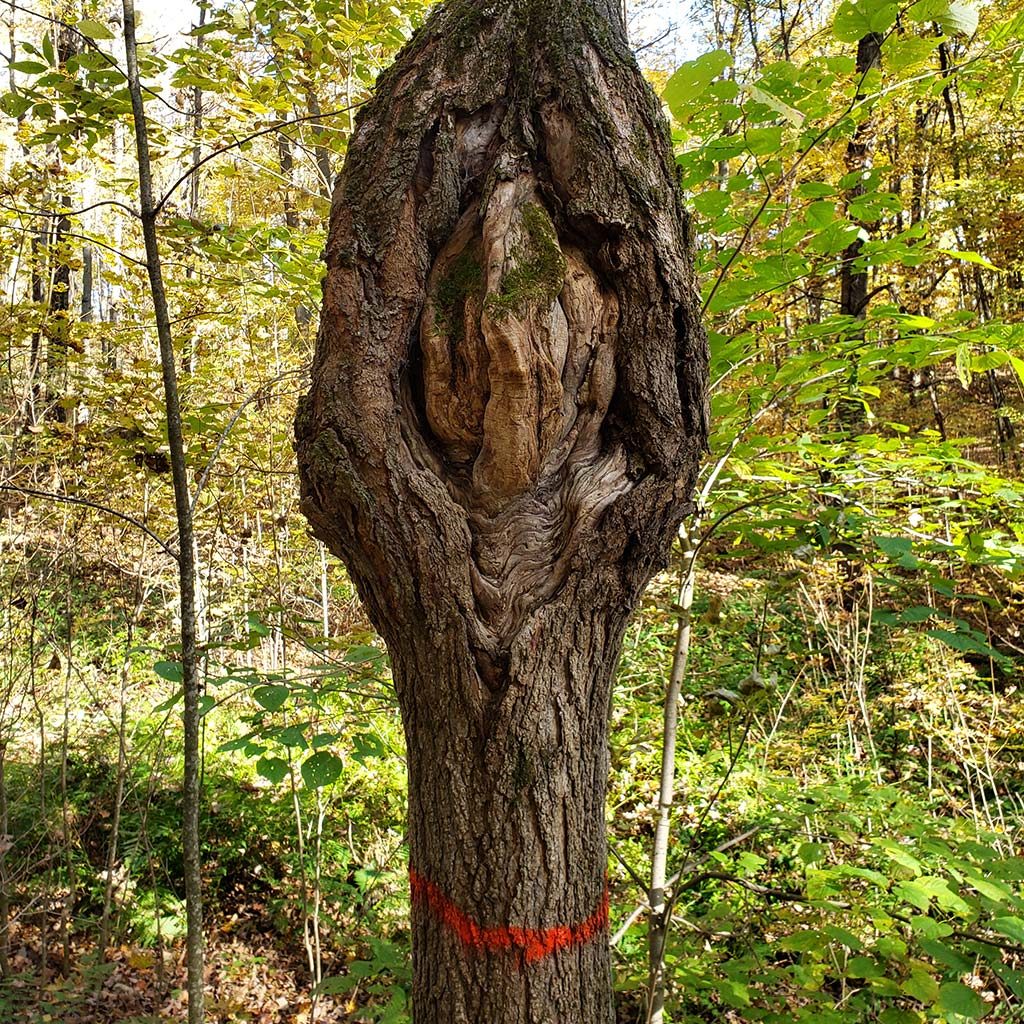
Step 3
The directions of the silvicultural prescription are implemented by GRCA Certified Tree Markers. Tree markers select trees for harvest with orange or yellow paint based on the details in the prescription. Selected trees are mostly poor quality, diseased or dying. Staff also mark certain trees and other values in blue to indicate retention. This ensures that important ecological and cultural features in the forest are protected.
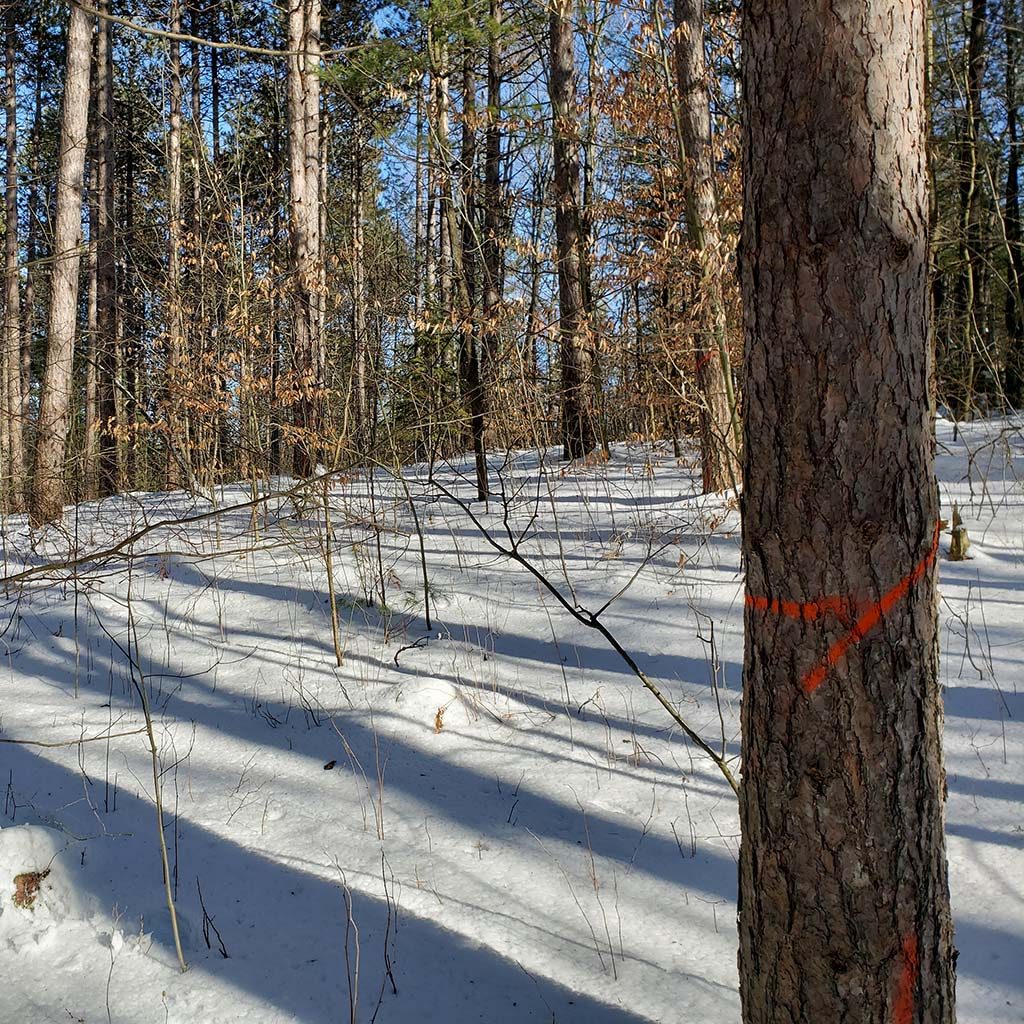
Step 4
A sale of standing timber is prepared based on the trees marked for harvest by the Tree Markers. Paperwork associated with the sale provides extra protections for the forest environment (e.g. no harvesting during the spring when the forest environment is sensitive to damage).
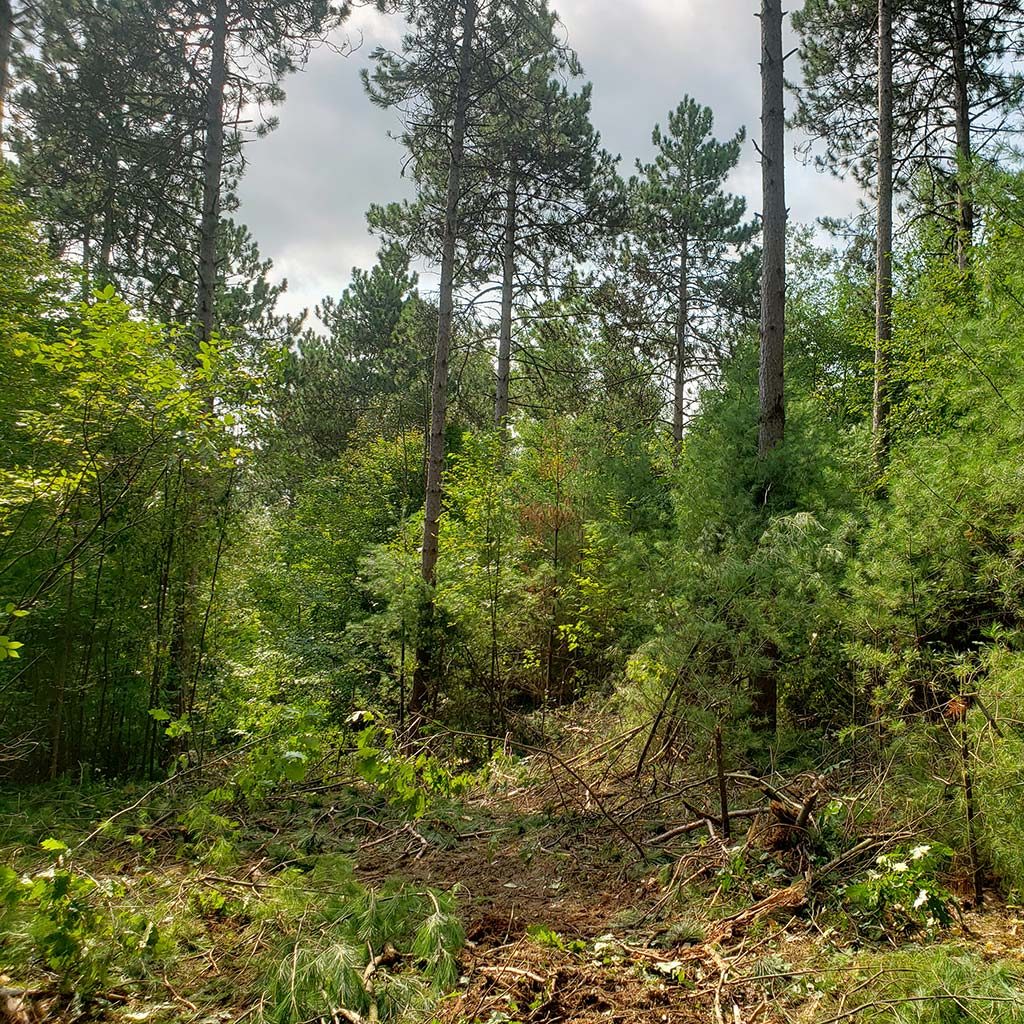
Step 5
The purchasing logging contractor completes the harvest of the marked trees. Routine inspections are completed by the GRCA Forester to ensure that only marked trees are harvested and that no unnecessary damage is done to the Forest or recreational trails. Preservation of regenerating trees is one of the most important things the GRCA Forester looks for.
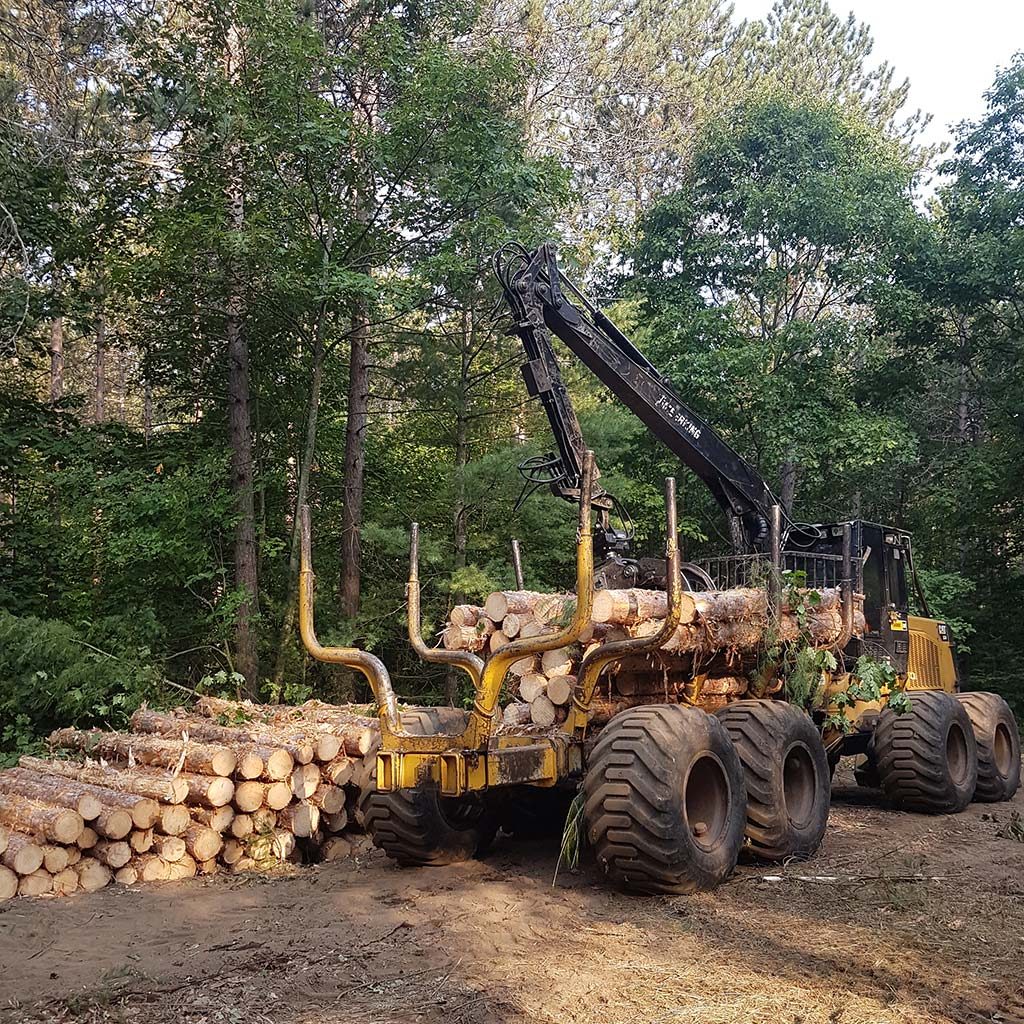
Step 6
Harvested trees are picked up, transported and piled in areas called landings. Landings are sorted based on size and tree species.
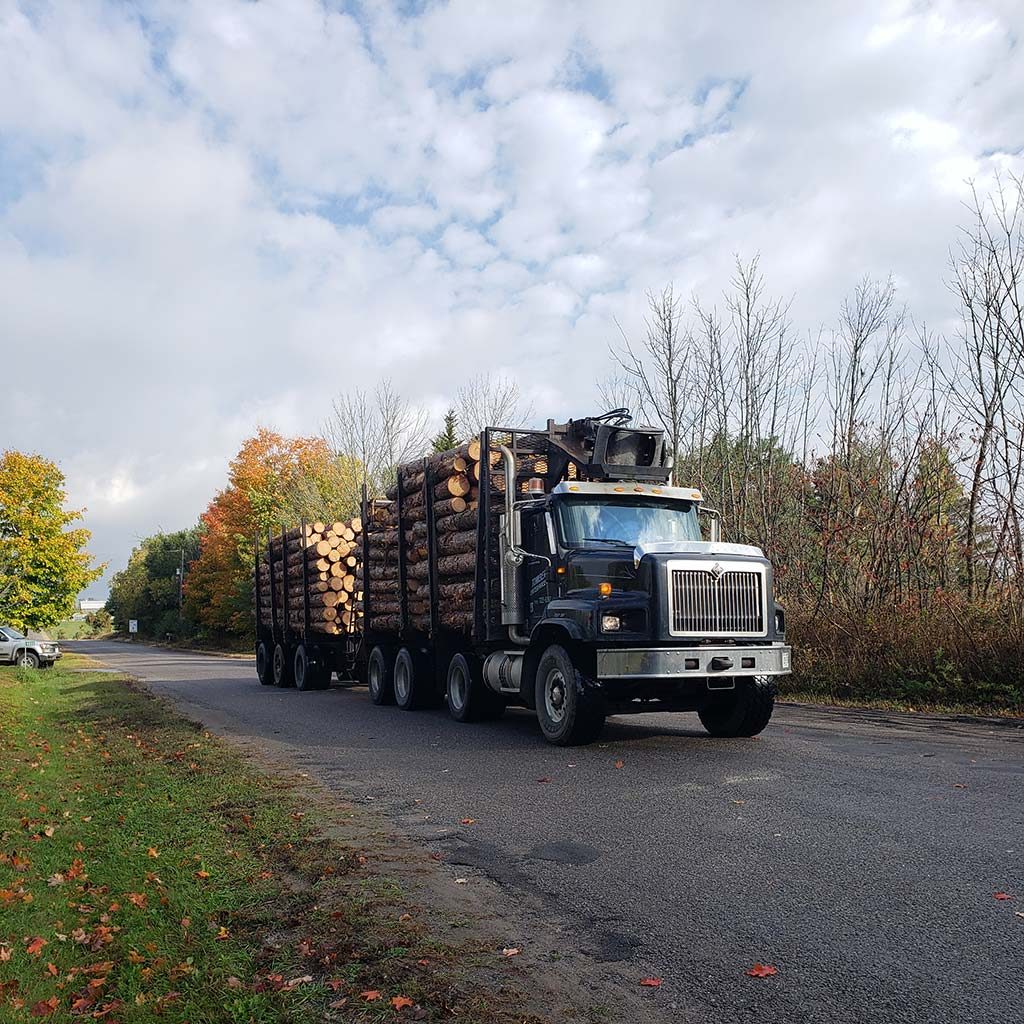
Step 7
From here the logs are trucked out to the saw mills where they become various wood products. Examples of products sourced from the Ganaraska Forest include firewood, lumber, telephone poles and veneer.
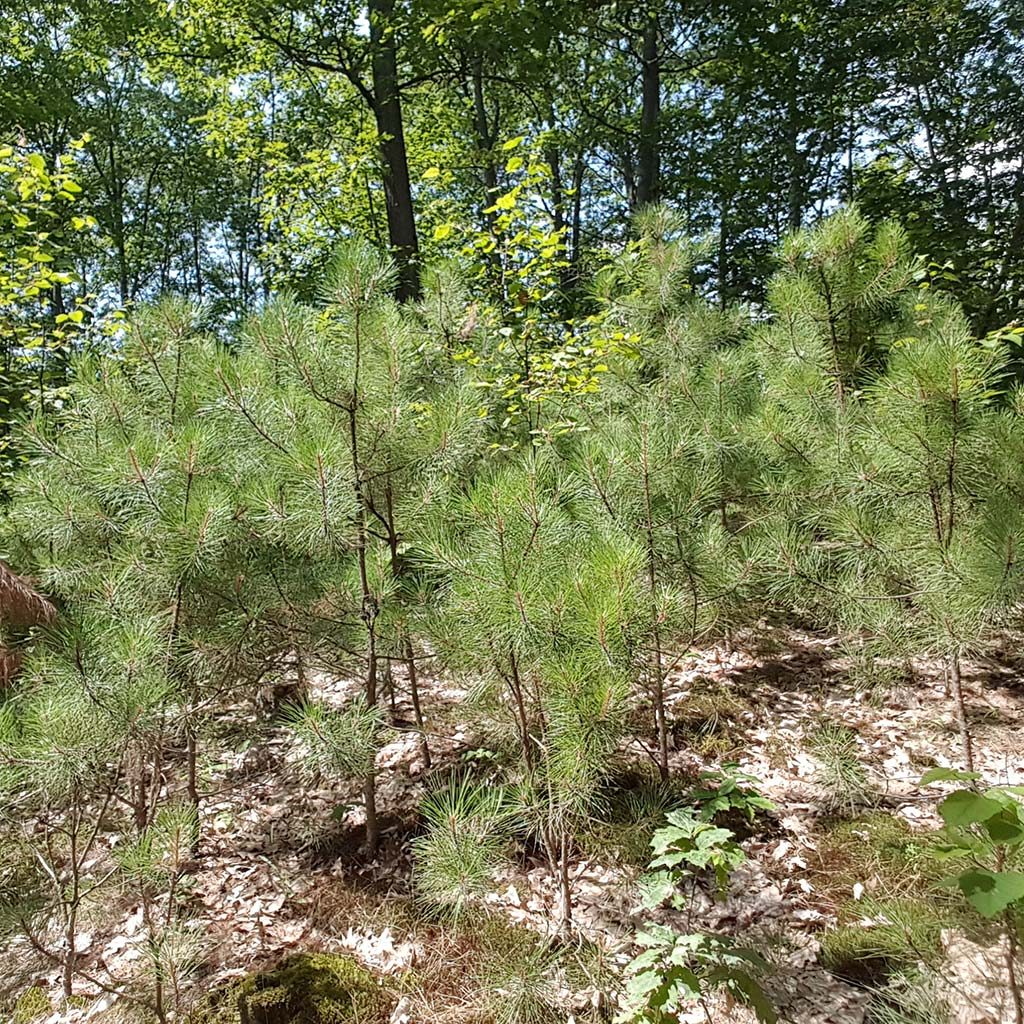
Step 8
A post-harvest inventory is conducted a few years after to confirm that the forest is responding as expected based on the prescription. The entire timber harvest process is then repeated again until the desired conditions are reached.
The Role of Timber Harvesting in Managing the Ganaraska Forest
Trees require three things to grow: water, soil and sunlight.
As forest managers, we have no direct control over water and soil conditions; we are restricted to working with whatever conditions nature provides. However, we can influence sunlight conditions in a forest by selectively removing stems through a timber harvest.
In nature, sunlight is regulated in forest stands by natural disturbances. These disturbances can range from very small (individual tree mortality from an infection) to very large (forest fire). Forest managers mimic these disturbances with controlled timber harvests to create the ideal light conditions for growing desirable native species like Sugar Maple, Red Oak and White Pine.
By prioritizing the removal of diseased, dying or poor quality trees in regular intervals, timber harvests create better growing conditions for residual trees in the canopy and understory. The extra light made available through these ‘thinnings’ encourages the establishment, growth and maintenance of a healthy, diverse, and resilient forest.
They also allow for the Ganaraska Forest’s Red Pine plantations to be restored to diverse, native mixedwood forests in as little as 100 years. Under natural conditions, this process would take hundreds to thousands of years.
Sustainable timber harvests are one of the most important tools that GRCA forest management staff utilize to meet ecological management objectives for the Ganaraska Forest. These harvests are also important sources of revenue which support the maintenance of the Ganaraska Forest and other programs within the GRCA.
The Ganaraska Forest has a storied history and the benefits of management through thinning is evident everywhere. All sections of the Ganaraska Forest are actively managed for timber from August to February each year. Recreational users are recommended to check for areas with active timber harvesting prior to exploring the many trails that the forest offers.
